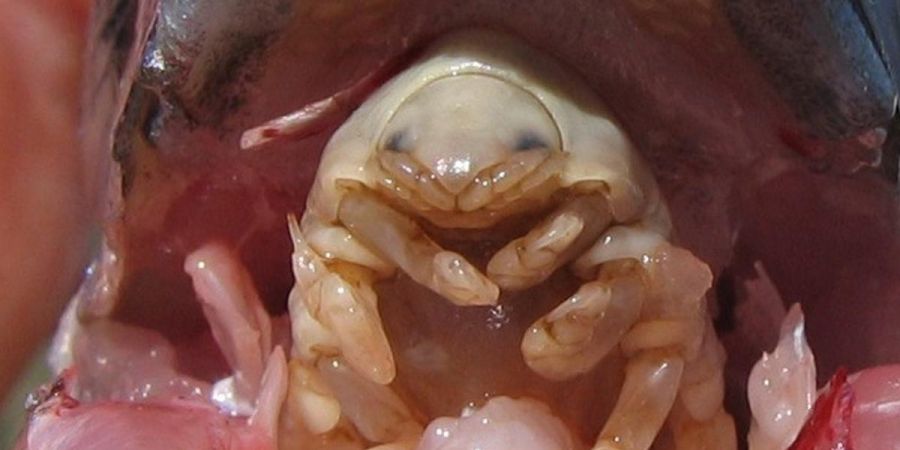

Imagine you wake up one day and cannot feel your tongue but instead you find a parasite which is as big as your tongue replaced your tongue.
Well this is completely true and is found in fishes.This parasite makes its way into the fish's body through its gill slits because ofcourse the fish wont just let the parasite enter its mouth.Now this is what the female does but the male attaches itself to the gill arches beneath and behind the female.
Once the female parasite has entered the fish's body it starts working.The first thing it does it cut the blood supply of the tongue because it doesnt really eat the tongue but it cuts its blood supply and sucks the blood from it till it sheds off on its own.The poor fishes tongue is now replaced by a parasite.You must be thinking that the parasite feeds on whatever the fish eats.But no this is wrong.It feeds on the blood and mucus of the fish.
You must be wondering what the male parasite does.Well it stays at the gill chamber behind and beneath the female and compete to mate with the female parasite.One intresting fact about them is that they can be born as males but can become female in later life.This is because only the female parasite can attach herself to the tongue.Sometimes many of these parasites enter the fish's body but only one gets the privilege to replace the tongue of host fish and as only the females can do this males are automatically eliminated from the process.
Many people who went for fishing had found this parasite in fishes mouth.Another question arises that can this harm humans as well.The answer is a big no and the reason for this is not yet known but no evidence have been found which may prove that it causes harm to humans as well.You can eat a fish which has the parasite at the place of its tongue nothing would happen but it is kind of creepy.But personally I feel that if such a parasite was living in our mouth we can feel its presence and remove it physically or surgically.
Lastly the name of this creepy creature is cymothoa exigua.They existence is similar to crustaceans(shrimps and crabs).And it belongs to family Cymothoidae.






















